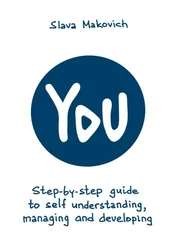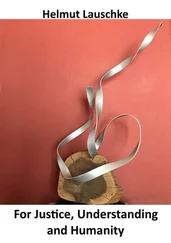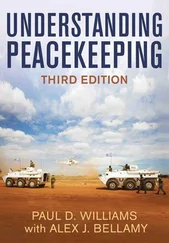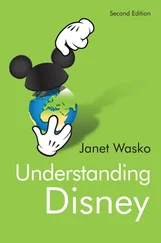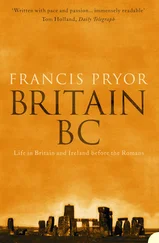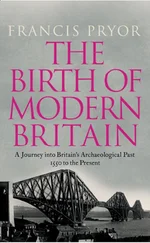Chapter 2. Cities and Towns
The United Kingdom of Great Britain and Northern Ireland has a population of around 61 million in 2009. Of these people, more than 50 million in England, an area approximately the same size as Permsky Krai. We may love and enjoy our countryside but most of us live in cities and towns; we are, by a large majority, an urban population. When we think of towns and cities in England we have very different images in mind from the images of typical Russian towns. The origins and structure of English towns and cities relate to the land and are manifest in their size, architecture, and relationship to one another.
Some of our towns have recorded origins nearly two thousand years ago when Britain was part of the Roman Empire and when strategic roads were built across England for military purposes. They needed military stations which quickly developed as towns for trade and construction. After the Romans came invasions of Saxon, Danes and eventually the Norman French under William the Conqueror. William ordered his officials to compile an account of the new country over which he ruled. As a consequence of this order, we can see that nearly a thousand years ago most of our present-day towns and villages were recorded in the Domesday Book (1087). We know that besides the Roman roads, many of which were partially disused or half-buried, the tracks and roads which connected these towns and villages to one another were already well-used by walkers, horses and carts. From mediaeval times the largest towns were ports; inland were 'market towns' which provided useful trading for the surrounding villages. London was capital, port and commercial centre for the whole of the country. This traditional and organic pattern of population settlement was later overlaid with the rapid development of the great industrial cities of the north and the midlands in the later eighteenth and the nineteenth centuries.
If you have the chance to look out of a plane over England you can see this pattern of development. Most towns and villages look like irregular stars; even the smallest village is connected to two or three others. A town of about 100,000 people can have seven or eight major routes leading out of it in an approximate star shape; cities of 500,000 or more have dozens of connections to the nearby towns and villages. By contrast, the view from a plane over Russia where the population is more thinly spread shows roads stretching vast distances in lonely grandeur through empty countryside, villages where houses are built in a single line on either side of the road, settlements constructed on a grid pattern, and the old centres of towns surrounded by high-rise flats that come to abrupt end right up against the forest. This is a very alien pattern for us. We have no such forests or other 'virgin land' on which to build. Even the nineteenth century industrial cities grew up on the basis of an existing network of roads and villages.
One result of this historical development of our urban areas is that although our country is much more densely populated than yours, only London has more than a million people (around 7 million). By contrast, Russia has a population less than three times the population of England, but has 36 cities with around one million inhabitants or more. In Britain, the next biggest city after London is Birmingham with just one million, Leeds with about 700,000, and Sheffield, Bradford, Liverpool and Manchester all with between 400,000 and 550,000. All these cities are separate cities, although they are very close to other urban areas, and all of them, apart from London, expanded as major industrial cities in the nineteenth century. The largest city outside London which was already highly developed in mediaeval times as a port and commercial centre is Bristol, with less than 400,000 inhabitants.
(Scotland's largest city is Glasgow with a population of 580,000, followed by Edinburgh (the capital) with 450,000. Cardiff, the capital of Wales, has a population of about 300,000, and Belfast, the capital of Northern Ireland, a population of 275,000.)
You may be puzzled by the use of two overlapping terms: 'town' and 'city'. A city is either a very large town (perhaps 300,000 or more inhabitants) or a town which has been granted a special charter and which has a cathedral in it. (A cathedral in Britain is not equivalent to a 'sobor' in Russia; there are only about forty English cathedrals in the whole country.) The two definitions of 'city' overlap, and today most people will think of the first meaning: a city is a large town. It has a grand centre with major civic buildings, several industries, substantial suburban areas and a region over which it has some authority.
Apart from the big cities, our land is tilled with hundreds of towns with populations between 20,000 and 150,000. There seem to be very few such towns in Russia, presumably because -given your distances - they are not very viable as commercial and industrial centres. In Britain they are usually historic market towns, or towns which developed with specific industries based on local resources (such as wool for glove-making, or suitable sand and clay for making bricks). Most of them have a centre where some of the streets have buildings dating back to the sixteenth and seventeenth centuries. The huge increase in the urban population in the nineteenth century meant that the Victorians built brick suburbs around these old centres and along the roads out of town. In the twentieth century, further housing developments 'filled in' the areas between one radial road and the next, and stretched out further along these roads. Hence the slowly-growing star shape.
A few 'new towns' were founded in the twentieth century as an experiment in creating a new social environment. One of the most distinctive is Milton Keynes which was built in the early 1970s, and which now has a population of about 240,000 people. It was constructed on a grid pattern, with innovations such as little centres of population inside each of the grid roads which are linked by small roads and cycle-paths under the main roads. It is an unfamiliar and intriguing sight in Britain, reminding us that we are most familiar with the 'star-shape' of our traditional towns and cities.
One other notable difference between your towns and ours is the variety of architecture which you will observe in English cities. The geological complexity of our small island means that we have many different kinds of stone - and many places with no suitable stone, so that we use brick. Local materials predominate; we have no remaining large oak forests, so wood is not a material to be used except in very expensive houses. We do not have pine forests so we cannot build your wooden houses.
For reasons discussed in the next chapter, we do not build many high-rise, multi-storey blocks of flats, so our residential areas consist of rows of two- or three-storey houses neatly arranged along roads. The English visitor to an unfamiliar area can easily find the house he wants if he has the house number; he does not have to plunge into land away from the road where large blocks of flats stand at odd angles to each other, often confusingly numbered and not clearly related to the nearest road. Our suburban roads may be neat but they are rarely straight. Town planners designed them so that they curve elegantly in S-shapes or contour round hills, or end in a little cluster of half-moon terraces. We like these patterns, particularly those which mean that the houses are hidden from the main road and noisy traffic. Wherever we can, we use the shadowy map of old lanes and alleys which curved and twisted along the boundaries of old properties.
Perhaps the most serious damage to these traditional towns and even to our big cities was the enthusiasm during the 1960s and early 1970s for radical redevelopment, using large-scale concrete and glass rather than traditional brick in traditional classical styles for our municipal buildings. The old centres of many cities were pulled down and new concrete buildings erected. Most of them are now considered ugly and soulless; many have been pulled down in their turn. Birmingham suffered particularly badly although it has now done its best to create an exciting super-modern centre.
Читать дальше


